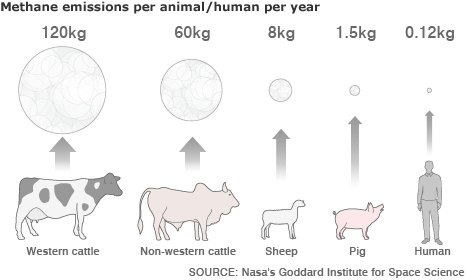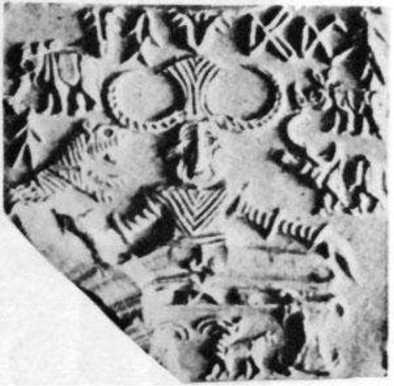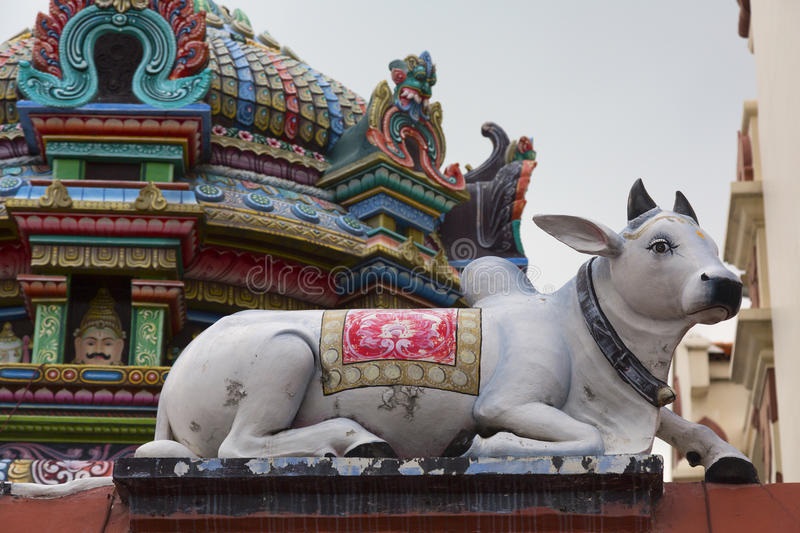Global warming due to Cows and Gaushalas


Written by Sulaiman Razvi
Cow is holy animal in Hinduism. Cow is so revered among Hindus that even its wastes like dung and urine is considered sacred and it is claimed that the Panchagavya (Cow urine, dung, milk, curd & Ghee) can cure many diseases. There is no stopping for cow vigilantism in India, people are lynched to death over beef and women thrashed and raped for beef. Cow has more value than humans in India. Due to the reverence of cow, Hindus ignore the environmental damage caused by cows and Gaushalas (cow shelters). Cow emits greenhouse gasses like CO2 and Methane and Methane is denser greenhouse gas than CO2, these gasses are dangerous for our environment. But according to Vedic scientists cow is a useful animal and not a dangerous animal in fact they even say that cow exhales oxygen.
Hindus are trying to impose their food habits on others, there is already a ban on beef in India except for few states. But that doesn’t seem to satisfy Hindus, they are trying to show that beef is prohibited in other religions as well and are coming with some weird reasons on why one shouldn’t have beef. They present their views backed by unproven scientific evidence that too conducted by cow loving Hindus only. They also try to show scientific evidence on how beef consumption is bad for environment. Well, Hindus takes only those scientific research which seems to favor them and reject the one which doesn’t favor them, like consumption of cow urine is scientifically proven to be harmful that can even lead to death but Hindus doesn’t agree with this scientific finding because it contradicts their views on cow urine which according to them has cure for almost all diseases.
Coming to the point. I came across an article widely shared by Hindus on social media which says that giving up beef is good for environment. Hindus have hastily shared the article without reading the article and what really is causing it. As you may know, cow emits methane gas more than a car which is dangerous for our environment, rearing cattle requires 28 times more land than pigs, goats or chicken, 10-11 times more water and more food is required to feed cows than to feed other livestock like pigs, goats and chicken. And this is how beef is more dangerous than other foods but our Vedic scientists and beef-haters didn’t care to read this. Even vegetable food requires water, land to grow, it requires energy to be stored in refrigerator, it needs to be transported to reach the desired destination in between the journey of vegetables to final destination, fuel burns up and the vehicle transporting it emits harmful gasses. So even vegetarian food is harmful for environment but lesser one. The study published in PNAS says Greenhouse gas emissions from Indian paddy fields is very high So what I am trying to say is that Beef industry is considered harmful only because cattle requires land, excessive water and fodder to feed the animals. Taking this into consideration even Gaushala (cow shelters) in India is equally harmful to environment as beef industry because both these things requires large land to shelter the cows, requires water to quench the thirst of cows, at least nearly 40-50 kilograms of fodders for each cow every day. So if Hindus wants non-vegetarians to give up beef because beef industry is impacting environment then Hindus should also give up the idea of having Gaushala (Cow shelters). At least beef industry is contributing to the economic growth of the country by paying taxes, beef is a billion dollar business in India whereas Gaushalas does nothing except for sucking money out of people for maintenance of Gaushala and feeding animals instead of feeding poor people.
Many Hindus are not aware that there are separate farming for milk production known as dairy farming and beef industry for beef, when you say that “I love beef” to a Hindu (probably on internet otherwise you will be lynched) the defensive Hindu will tell you that “if cows starts to be slaughtered everyday then we will run out of milk, so to maintain average milk production cow slaughter must be stopped”. Five products of cow are sacred in Hinduism Cow urine, dung, milk, ghee and curd which is considered Panchagavya. Even dairy industry is on par with beef industry according to experts in terms of emission of greenhouse gasses. Let’s have a look at what the article says which is widely shared by Hindu apologists on the internet. The article is titled “Giving up beef will reduce carbon footprint more than cars, says expert” Published on Monday 21 July 2014 by theguardian.com. It says,
“Study shows red meat dwarfs others for environmental impact, using 28 times more land and 11 times water for pork or chicken”
“The heavy impact on the environment of meat production was known but the research shows a new scale and scope of damage, particularly for beef. The popular red meat requires 28 times more land to produce than pork or chicken, 11 times more water and results in five times more climate-warming emissions.”
“Eshel’s team analysed how much land, water and nitrogen fertiliser was needed to raise beef and compared this with poultry, pork, eggs and dairy produce. Beef had a far greater impact than all the others because as ruminants, cattle make far less efficient use of their feed. “Only a minute fraction of the food consumed by cattle goes into the bloodstream, so the bulk of the energy is lost,” said Eshel. Feeding cattle on grain rather than grass exacerbates this inefficiency, although Eshel noted that even grass-fed cattle still have greater environmental footprints than other animal produce. The footprint of lamb, relatively rarely eaten in the US, was not considered in the study published in the journal Proceedings of the National Academy of Sciences.”
Source: https://www.theguardian.com/environment/2014/jul/21/giving-up-beef-reduce-carbon-footprint-more-than-cars
So beef production leads to global warming not because cow releases some kind of magical gasses when slaughtered but because rearing cow requires more land, more water, more crops for feeding and most importantly because cows emits more greenhouse gasses than a car that’s leading to global warming. So in this way even Gaushalas will impact the environment. Following are some evidence for my claim although the article shared by Hindu apologists itself proves my point,
Cattle used for ploughing, milk production will also be dangerous to environment as well as cattle cultivation
“Livestock such as cows, buffalo, goats, sheep, horses and mules are indispensable to India’s rural economy — whether the animals are yoked to plow land, raised for milk and manure or harnessed to pull carts to move goods and people. The Ministry of Agriculture estimates that livestock contribute 5.3% to total GDP, up from 4.8% during 1980-81. But, says K.K. Singhal, head of dairy cattle nutrition at the National Dairy Research Institute in Karnal in northern India, “while livestock plays a crucial role in the economy, global warming is becoming a huge worry. We’re trying to find indigenous solutions, because our realities are very different from the West.”
“For starters, most Indian livestock is underfed and undernourished, unlike its robust counterparts in richer countries. The typical Indian farmer is unable to buy expensive dietary supplements even for livestock of productive age, and dry milch cattle and older farm animals are invariably turned out to fend for themselves. Poor-quality feed equals poor animal health as well as higher methane production.”
http://content.time.com/time/world/article/0,8599,1890646,00.html
“Climate-warming gases emitted by manure, feed production, milk processing and even cows’ burping are a concern. But the F.A.O. says that globally, the dairy industry has made real environmental strides since 2006, when it warned that livestock was one of the two or three most environmentally damaging sectors, polluting “on a massive scale.”
“In the San Joaquin Valley, though, environmentalists and residents say they are still paying the price for the world’s taste for milk, cheese and yogurt, in the form of tainted water, terrible odors, flies and fumes that add to the region’s severe air pollution.”
“The American Lung Association says the region suffers from America’s highest levels of the tiny, airborne pollution particles that are linked to ailments like heart attacks and strokes. Many sources contribute, including heavy truck traffic and the dairy and feed processing facilities whose vast tanks and chutes line Highway 99. Nearby mountains exacerbate the problem by holding stagnant air in place.
Near a big cow farm in Riverdale, residents “are not comfortable even going outside on most summer days, they’re not comfortable inviting people to their homes and they’re not comfortable having their children play outside,” said Cesar Campos, coordinator at the Central California Environmental Justice Network, in Fresno. “Dairies, there is that smell attached to it, it is impossible for the community to ignore.”
“Globally, dairy production accounted for 2.8 percent of all man-made climate-warming gases in 2005, the most recent year for which data is available, she said.”
“On his computer, at home amid Shafter’s almond fields, Mr. Frantz pulled up a satellite map showing a yellow-orange blob indicating elevated levels of the potent climate-warming gas methane over the region. “That’s not an industrial area,” he said, pointing. “There’s no source of methane except the cows.”
http://www.nytimes.com/2015/05/04/business/energy-environment/how-growth-in-dairy-is-affecting-the-environment.html
“Environmentalists often note that cattle cultivation is a critical source of greenhouse gas emissions, with methane 105 times the potency of carbon dioxide. Pasturing a growing population of slaughter-free cattle can also displace wildlife, air-purifying vegetation, and agricultural crops.”
https://news.vice.com/article/cow-retirement-homes-are-booming-in-india-heres-why
Study says cow urine may be a reason for global warming
Cow urine — a minor fount of research in India for its medicinal benefits — may also contribute to global warming. The urine from the ruminant is a source of nitrous oxide emissions (N2O), a gas that is 300 times more powerful than carbon dioxide. Most times, when cow urine is used in degraded pastures, which are also seen in vast tracts of land in India, N2O emissions are tripled, says a study conducted in Colombia, Argentina, Brazil, Nicaragua, Trinidad and Tobago, and published in the latest edition of the peer-reviewed Scientific Reports.
https://www.thehindu.com/news/national/study-says-cow-urine-may-be-a-reason-for-global-warming/article26131810.ece
Cows of dairy farms and meat industry leading to global warming and Indian cow produces more methane.
“New research suggests that the methane emissions are far higher than estimated earlier. Data published last year in the Asian-Australasian Journal of Animal Sciences shows that India’s livestock annually produces 14.32 million tonnes of GHG, which is a whopping 15.1 per cent of the global total. This is alarmingly much higher than the nine million tonnes estimated in 1994 or the figure of 11.75 million tonnes published by scientists at the Ahmedabad-based Space Applications Centre in February 2009.”
“There’s more. The world’s largest producer of milk at roughly 140 million tonnes a year, the country must considerably crank up production to 180 million tonnes over the next five years to cater to the needs of its growing population and expanding disposable incomes. Projected demands for meat and dairy products suggest that methane and other GHGs from Indian livestock could swell to nearly 19 million tonnes by 2050. Half of this will, unbelievably, be emitted from our cows.
“EPA (the US Environmental Protection Agency) estimates that “a single cow can produce between 250 and 500 litres of methane a day”. Indian cows, as any animal husbandry expert will confirm, are far more flatulent and produce much higher volumes of methane. Unlike dairy operations in western nations, where the animals are fed scientifically with regular dietary interventions to increase digestive efficiency, livestock in India is relatively undernourished. Only a small handful of farmers are ever able to afford the high cost of regulated feed and dietary supplements.”
http://www.dailyo.in/politics/indian-cows-flatulent-global-warming-cow-worship-haryana-milch-beef/story/1/6670.html
Methane is 20 times more damaging than CO2, and gasses from Cow is more dangerous than a car
“The emissions produced by nature’s woodwind section contain a nasty mix of many gasses, among them methane. Though carbon dioxide is the first gas that comes to mind when we think of greenhouse emissions, pound for pound, methane is more than 20 times more powerful in terms of its global warming potential. Methane doesn’t linger in the atmosphere quite as long as CO2, and it’s not produced industrially in anywhere near the same quantity, but it does its damage all the same — and livestock toots out a surprisingly large share of it.
According to one Danish study, the average cow produces enough methane per year to do the same greenhouse damage as four tons of CO2. The average car, by contrast, produces just 2.7 tons. Multiply that by the planet’s 1.5 billion cattle and buffalo and 1.8 billion smaller ruminants and you have the methane equivalent of two billion tons of CO2 per year. According to the U.K. Department for Environment, Food and Rural Affairs (DEFRA), livestock account for about 4.5% of all of the country’s annual greenhouse gas emissions. Globally the figure is thought to be higher — about six percent.”
http://science.time.com/2011/03/30/silence-the-cows-and-save-the-planet/
“Agriculture accounts for approximately 16% of Australia’s total greenhouse gas emissions, with direct on farm emissions from dairy farms contributing about 19% of this, (or about 3% of total national emissions).”
“Each individual dairy farm will have a different emissions profile depending upon their farm system. Approximately 60 to 70% of a typical dairy farm’s emissions arise from methane produced by the rumination of cows. Nitrous oxide arising from dung and urine contributes about 10%, while energy and indirect losses from wet soils contribute a similar amount. The contribution from the production of electricity used on farm is also about 10%.”
http://agriculture.vic.gov.au/agriculture/dairy/emissions-in-dairy
“The dairy sector makes up for around four per cent of all global anthropogenic greenhouse gas emissions, says a report by the Food and Agriculture Organisation of the United Nations.
Anthropogenic (caused or produced by human beings) greenhouse gases (GHG) include carbon dioxide, methane and nitrous oxide.
“This figure (4 per cent) includes emissions from production, processing and transportation of milk products as well as those related to meat produced from animals originating from the dairy system,” FAO said in a statement highlighting findings of its study.
The dairy sector contributes 2.7 per cent of global anthropogenic GHG emissions, if meat production is excluded.”
“In 2007, the dairy sector emitted 1,969 million tonnes (MT) of carbon dioxide equivalent, of which 1,328 MT is attributed to milk, 151 MT to meat from culled dairy animals, and 490 MT from calves from the dairy sector that were raised for meat.”
http://www.business-standard.com/article/economy-policy/dairy-sector-produces-4-of-greenhouse-gases-110042500067_1.html
Cows consumes lot of water and requires lot of fodder
“Ranching, the report adds, is “the major driver of deforestation” worldwide, and overgrazing is turning a fifth of all pastures and ranges into desert. Cows also soak up vast amounts of water: it takes a staggering 990 litres of water to produce one litre of milk.”
http://www.independent.co.uk/environment/climate-change/cow-emissions-more-damaging-to-planet-than-co2-from-cars-427843.html
“The poor feed quality in impoverished regions like sub-Saharan Africa means that a cow there may consume as much as 10 times more feed — mostly grasses — to produce a kilogram of protein than a cow raised in richer regions. That lack of efficiency also means that cattle in countries like Ethiopia and Somalia account for as much as 1,000 kg of carbon for every kg of protein they produce — in the form of methane from manure as well as from the reduced carbon absorption that results when forests are converted to pastureland. That’s 10 times higher than the amount of carbon released per kg of protein in many parts of the U.S. and Europe, where livestock production is much more intensive.”
“About that: in North America or Europe, a cow consumes about 75 kg to 300 kg of dry matter — grass or grain — to produce a kg of protein. In sub-Saharan Africa, a cow might need 500 kg to 2,000 kg of dry matter to produce a kg of protein, because of the poor feed quality in arid countries and because of the high mortality rates in herds of often undernourished and sick animals.”
http://science.time.com/2013/12/16/the-triple-whopper-environmental-impact-of-global-meat-production/
Crops production for feeding cows results in global biodiversity loss
“Firstly, there’s the issue that when it comes to livestock, reducing emissions isn’t the only challenge. Duncan Williamson, corporate stewardship manager at WWF-UK, voiced his concern yesterday in a press release response to the FAO study. “Around 30% of global biodiversity loss can be attributed to livestock production, such as the spread of pasture land or turning over forests and savannahs…to feed production.”
“The FAO’s last livestock report, a 2006 assessment titled Livestock’s Long Shadow, found that farms breeding chickens, pigs, and cows for meat and dairy products, produced a disconcerting 18% of global greenhouse gas emissions.”
https://www.theguardian.com/environment/world-on-a-plate/2013/sep/27/environment-food-ipcc-emissions-greenhouse-gas-livestock-vegetarian-meat
MUCKING DEADLY Experts claim a whiff of cow dung can ’cause cancer and heart disease’ as shock stats reveal farming emissions are major source of air pollution in Scotland
https://www.thescottishsun.co.uk/news/1576920/cow-dung-cancer-heart-disease-farming-emissions-air-pollution/

Experts have also suggested that greenhouse gasses from beef industry can be cut to a huge amount just by changing the diet of cows. So cows whether living or dead are dangerous for environment. There might be a solution to this in future or we can use Swami Dayanand Saraswati’s solution mentioned in his book which says that “It is the business of the State to punish or even kill all those men and animals that are injurious (to the community).” Ironically Hindus have become environmentalist when the matter is related to beef but finds no problem polluting the environment during their festivals like Ganesh Chaturthi, Durga idol immersion, Holi and especially Diwali.
You may also like to read: http://www.dailymail.co.uk/health/article-1250532/Being-vegetarian-does-harm-environment-eating-meat.html
http://www.wsj.com/articles/actually-raising-beef-is-good-for-the-planet-1419030738
http://news.bbc.co.uk/2/hi/uk_news/magazine/8329612.stm


